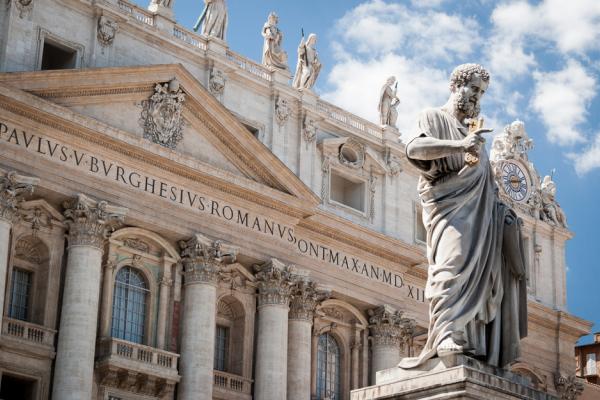The long and often contentious duel between the Vatican and the Leadership Conference of Women Religious came to an abrupt end on April 16. The probe of the umbrella group that represents most of the nation’s 50,000 nuns concluded with an amicable resolution that avoided serious sanctions for the sisters.
Here’s how the dispute played out:
April 2008: The Vatican’s Congregation for the Doctrine of the Faith taps Bishop Leonard Blair, then head of the Diocese of Toledo in Ohio, to carry out a doctrinal assessment of the LCWR.
December 2008: The Vatican’s office that oversees religious orders — the Congregation for Institutes of Consecrated Life and Societies of Apostolic Life — launches a parallel review of all women’s orders in the U.S. because of reports about “a certain secularist mentality that has spread among these religious families, perhaps even a certain ‘feminist spirit.’”
July 2010: Blair submits his eight-page initial assessment of the LCWR to the Vatican.
April 2012: The CDF announces a surprise crackdown on the LCWR, accusing the group of allowing views that have “serious theological, even doctrinal errors,” and conferences that featured “a prevalence of certain radical feminist themes incompatible with the Catholic faith.”
April 2012: The Vatican appoints Seattle Archbishop J. Peter Sartain, along with Blair and Bishop Thomas J. Paprocki of Springfield, Ill., to directly oversee an overhaul of the LCWR that would give the hierarchy the final say on the sisters’ statutes, speakers and published materials.
June 2012: After consulting the membership, the LCWR leadership responds by saying that the Vatican crackdown was based on “unsubstantiated” allegations and caused “scandal and pain” in the church. A week later, LCWR leaders meet with top Vatican doctrinal officials in Rome in what is called an atmosphere of “openness and cordiality.”
August 2012: After Blair accuses the sisters of “a lot of just denial” about the concerns, LCWR delegates vote to reject Rome’s plans to recast the group in a more conservative mold, but they decline an ultimatum that could have created an unprecedented schism between the sisters and the hierarchy.
April 2013: Pope Francis, a month after his election, orders the Vatican investigation to continue. Though not entirely unexpected, the decision raises questions about where the probe is headed under the new pontiff.
June 2013: The pope tells a group of nuns and priests from Latin America not to worry if they find themselves under scrutiny.
“Perhaps even a letter of the Congregation for the Doctrine (of the Faith) will arrive for you, telling you that you said such or such thing,” the pope said.
“But do not worry. Explain whatever you have to explain, but move forward.”
May 2014: Cardinal Gerhard Mueller, head of the CDF, delivers what he calls a “blunt” talk at the Vatican to the LCWR leaders, telling them they have been thumbing their nose at Rome’s demands to toe the doctrinal line and they need to obey or face serious consequences. The Vatican needs “more substantive signs of collaboration,” he said.
In response, the LCWR says, “We do not recognize ourselves in the doctrinal assessment … and realize that, despite that fact, our attempts to clarify misperceptions have led to deeper misunderstandings.”
August 2014: The LCWR gives its annual award to Sister Elizabeth Johnson, a popular theologian whose book on God was sharply criticized by a committee of U.S. bishops for alleged doctrinal failings. Johnson blasts the Vatican probe, saying “the waste of time on this investigation is unconscionable.” She receives a standing ovation from the sisters.
September 2014: Mueller renews his criticisms, downplaying the LCWR’s size and importance and defending the investigation.
“We have to clarify that we are not misogynists, we don’t want to gobble up a woman a day!” he says.
December 2014: The parallel Vatican review of women’s orders in the U.S., launched in 2008, concludes with a report designed to bury the differences and celebrate the sisters’ contributions to the Roman Catholic Church. That outcome is seen as a possible sign of things to come with the LCWR.
April 2015: The Vatican concludes its investigation of the LCWR without major sanctions, in what looks like a face-saving compromise that allows Francis to close the book on one of the more troubled episodes that he inherited from his predecessor, Benedict XVI.
David Gibson is a national reporter for RNS and an award-winning religion journalist, author and filmmaker. Via RNS.
Got something to say about what you're reading? We value your feedback!
